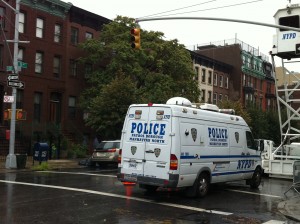Some advocacy groups and community organizers in East Harlem feel that there might be a connection between the rising level of youth unemployment and the NYPD’s “stop-and-frisk” policy.
The issue of “stop-and-frisk” in East Harlem has been a point of contention for some time. It’s when the police stop people they think are suspicious for one reason or another and, very simply, frisk them. The New York Daily News wrote last year, “The most likely neighborhood in New York where you’ll get arrested or hit with a summons if cops “stop-and-frisk” you is East Harlem, records show.”
Chair of Community Board 11 Manhattan, Matthew Washington, says of “stop-and-frisk,” “A lot of the time it’s without cause.”
To make matters worse, the black youth unemployment rate is 30 percent and the Hispanic youth unemployment rate is 21 percent, according to the U.S. Department of Labor – much higher than 9.1 percent – the national rate. Looking at the census data for this part of Manhattan, the majority of the population is either black or Hispanic.
“If the kids are out of a job and they’re hanging out on the corners, they’re going to be subjected to “stop-and-frisk”,” Yolanda Sanchez, President of the National Latinas Caucus.
“The police have to do their job,” says Nina Saxon, Vice President of National Alumni Council of Youth Build, “but what we have to do is hold our leaders responsible.”
Whose problem should this issue be? And what should they do about it? Take just a few minutes to do the survey below (click “continue reading”) and voice your opinion on this subject.

